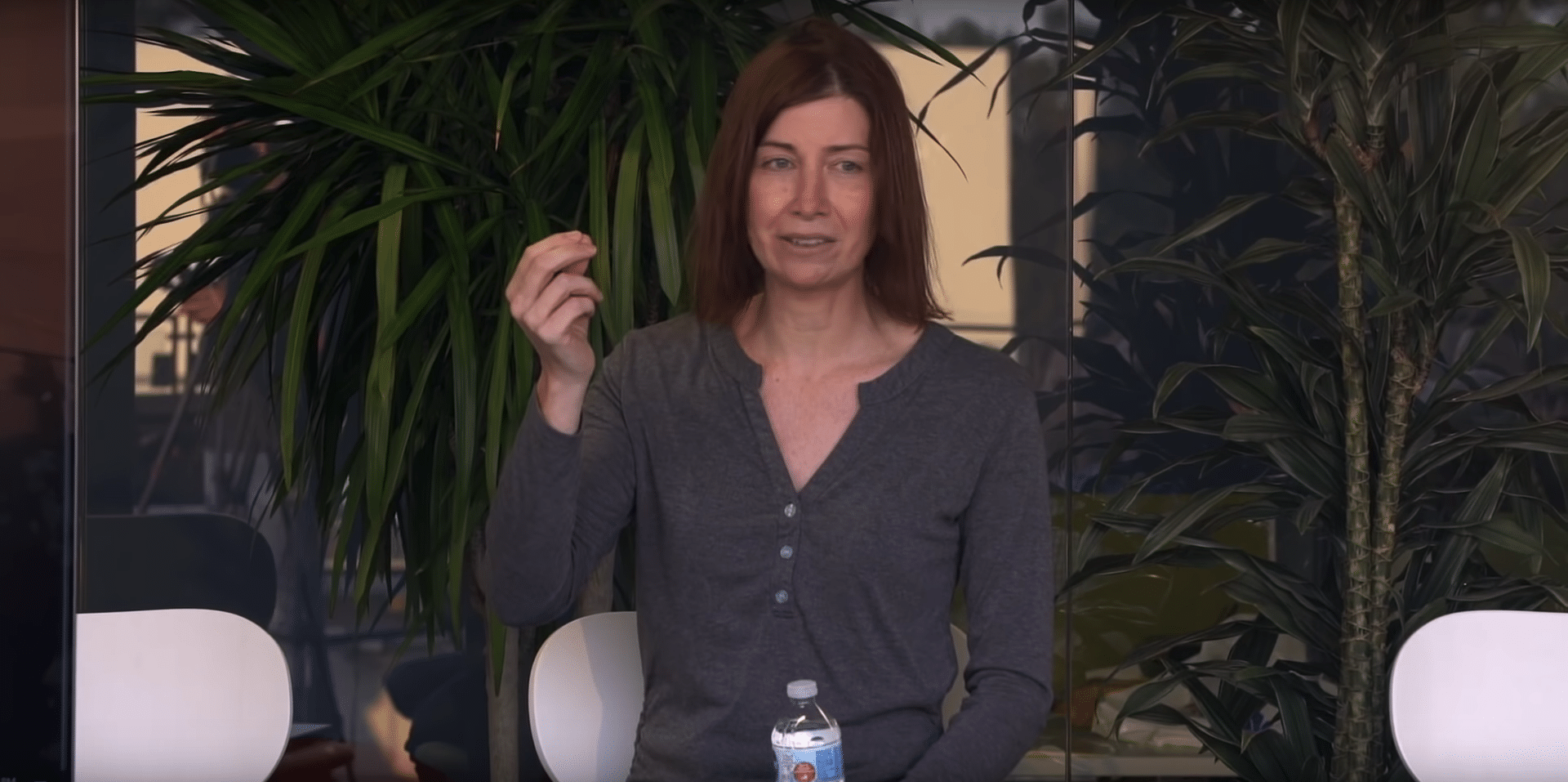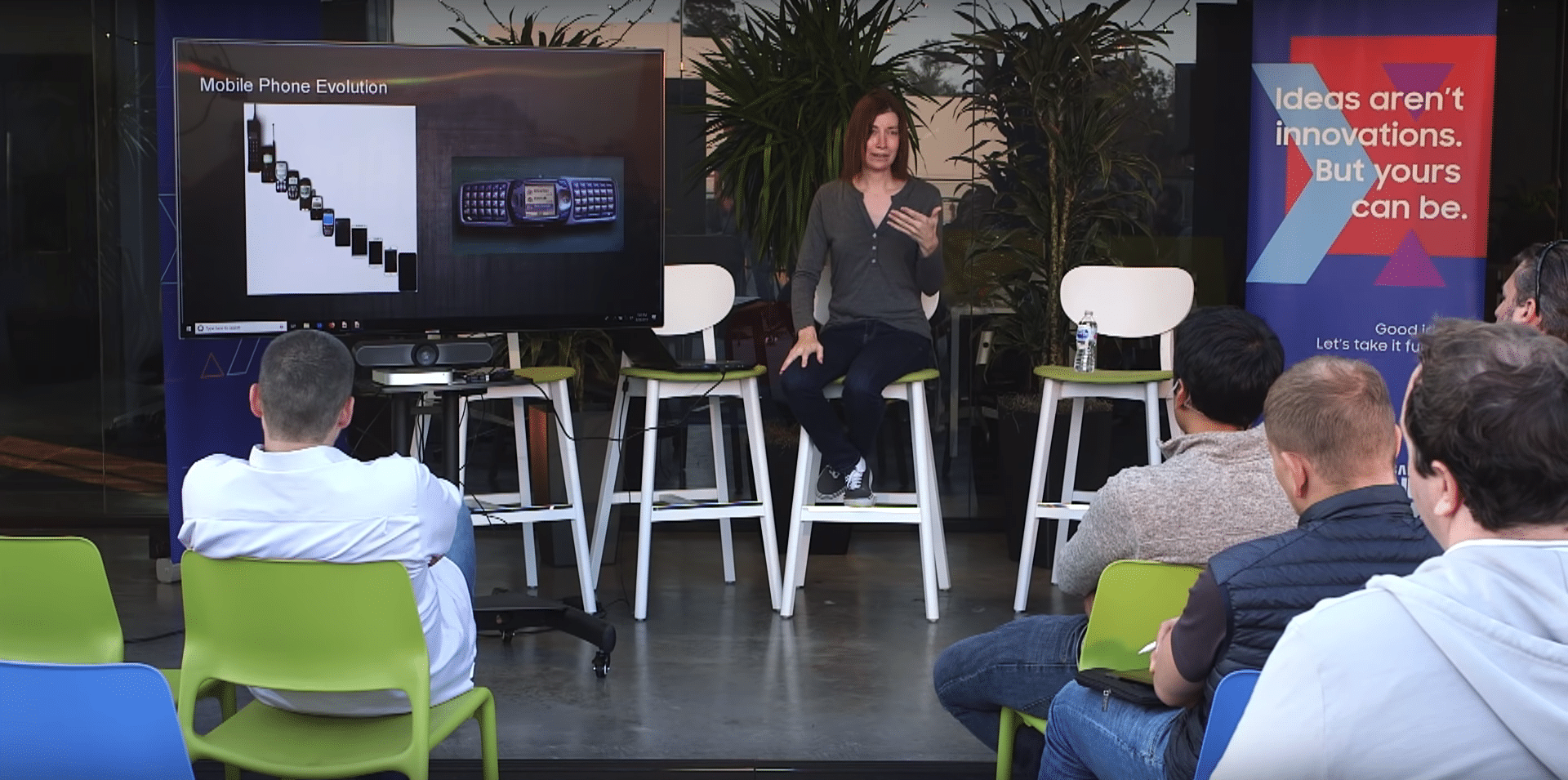
XR Talks is a series that features the best presentations and educational videos from the XR universe. It includes embedded video, as well as narrative analysis and top takeaways. Speakers’ opinions are their own.
Through oscillations of excitement and doubt over AR, the early optimism wasn’t wrong… it was just early. AR will reach world-changing status, but not as quickly as first expected. It’s like circa-2000 dot-com exuberance, which ended up being on target… but not until 5-7 years later.
This is where we are now with AR (and VR to a degree). It needs more time in the oven to reach the transformation that was trumpeted throughout 2016 and 2017. The process of native evolution needs to happen slowly and iteratively, says Tilt Five CEO Jeri Ellsworth.
Speaking at an AR/VR Munch ‘n Learn event at Samsung NEXT’s Silicon Valley offices (video below), she asserts that the path of any emerging technology can’t be predicted. It morphs into killer apps that look obvious in hindsight (think: Uber) but aren’t apparent in real time.
“These charts I look at all the time… they predict nothing,” she said of market forecasts and startups’ pitch decks where they project their own revenue growth. “You can’t predict if someone’s going up on this upward slope. You can’t predict whether they’re going to be successful or not.”

That said, there are of course several factors that can increase the chances of success. This is the standard list: strong team, good IP, product/market fit, timing and a dash of luck. But there are also a few specific success factors in AR that Ellsworth espouses including most of all, focus.
“Any company involved with AR and VR is going to have to find a useful vertical market to make your first baby step.” she said. “There’s no silver bullet that’s going to be so good that everyone quits computing on their phones or computers and switches tomorrow to some near-eye display.”
This slow-moving evolutionary process will progress similar to a poster that Ellsworth has hanging in her office. It shows the evolution of input devices for video games, including some crazy designs that didn’t make it, and the eventual progression to the game controllers we now know.
“The path there is not clear, and the path for AR and VR is not clear,” she said, tying the evolutionary construct to what we can expect for the future of XR hardware. “We’re going to make some really crazy stuff, and we’re going to make a lot of mistakes along the way.”

The same historical lesson can be seen in mobile devices, where we likewise saw this natural selection of hardware design. That includes things that now seem laughably off-target, like slide-out keyboards, the heyday of Nokia and other evolutionary steps before we got the iPhone.
“We take for granted that one day we woke up and there was this really great phone in our pocket, but there was a lot of evolution along the way,” she said. “In AR and VR, we’re going to do those same things, and our user interfaces are going to be constantly changing.”
Speaking of the iPhone, its introduction in 2007 holds another important lesson, said Google Robotics product manager Ryan Hickman in a subsequent panel discussion. The device seems primitive by today’s standards, but that’s important: It launched with a focused set of features.
“It’s wonderful to go back and watch the launch video,” he said. “The features were so boring… you get a browser, you get iTunes… it was it was simple. If Steve Jobs had said ‘you’ll pull out your phone to call a random stranger to pick you up in their car’ [we’d think], ‘are you crazy?'”

Going full circle to Ellsworth’s thoughts on baby steps, the lesson for AR and VR is focus and patience. This is especially true at this stage of AR given the technology’s limitations. But beyond limitations it’s wise, per the iPhone 1, to avoid being a jack of all trades and a master of none.
“In the hype cycle around AR, I think too many people expect one singular product that does a bazillion things,” she said. “It has my location in real time, 3D maps, it understands every object in the scene, voice recognition and AI…This is too much. Technology never launches that way.”
Eventual killer apps will likely be in gaming, utilities and commerce says Hickman (we agree), and in focused execution: “My belief is the user experiences will focus on gaming, utilities and shopping,” he continued, “and we need very specific point solutions to get there.”
See both talks below.
For deeper XR data and intelligence, join ARtillery PRO and subscribe to the free AR Insider Weekly newsletter.
Disclosure: AR Insider has no financial stake in the companies mentioned in this post, nor received payment for its production. Disclosure and ethics policy can be seen here.
Header image credit: Samsung, YouTube
